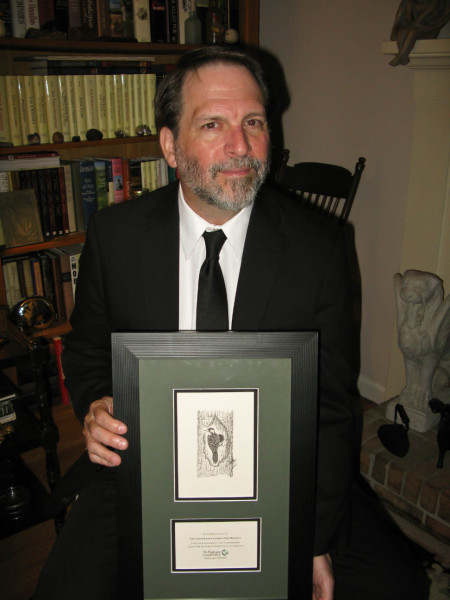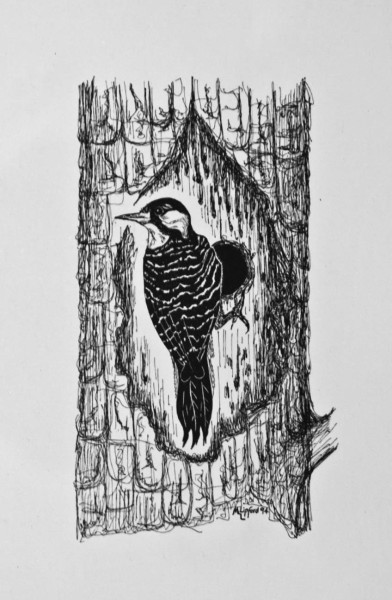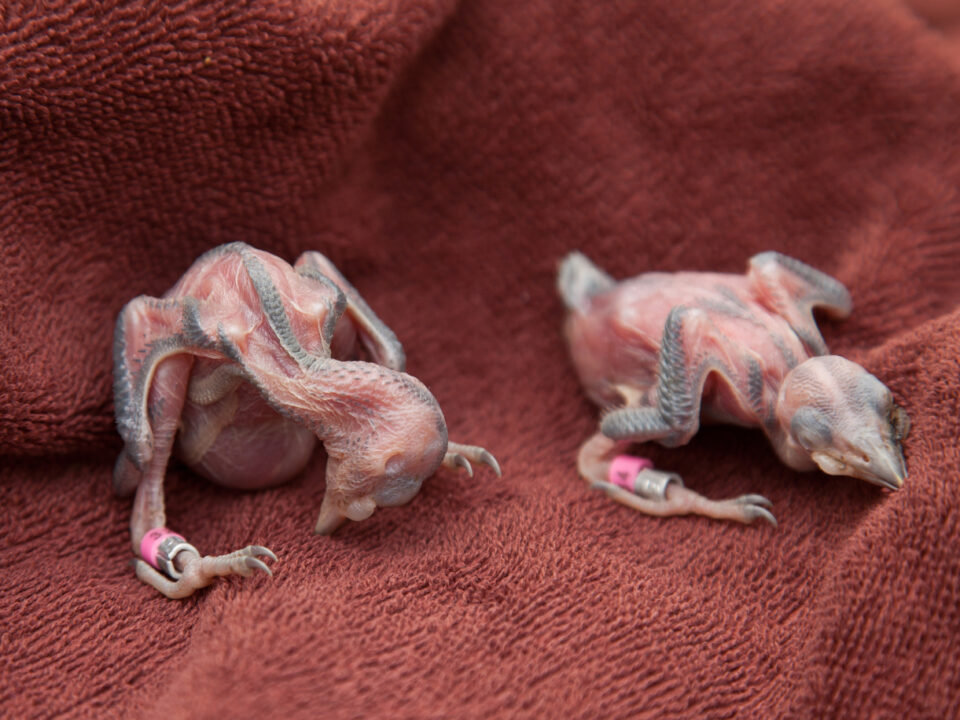CCB Receives Conservation Partner Award
Camellia Back and Forth Nanney’s & Robinson May 17 – Update
May 18, 2014Camellia Remains at Robinson Rd May 21 1am
May 21, 2014
The Center for Conservation Biology was awarded the 2014 Conservation Partner Award by the Virginia Chapter of The Nature Conservancy. The award was presented by chapter director Michael Lipford during the spring dinner of the board of directors in Suffolk, Virginia. On hand to receive the award were Mitchell Byrd and Bryan Watts.

Bryan Watts displays 2014 conservation partner award. Photo by Marian Watts.
The Nature Conservancy and The Center for Conservation Biology share a conservation mission and have worked together on dozens of projects for decades. As one of the great land-based conservation organizations throughout the world, The Nature Conservancy is tremendously effective in taking research provided by groups like CCB and converting it into conservation results. We are very proud to be working alongside the staff of the Virginia Chapter.

Artwork showing a red-cockaded woodpecker at cavity by Michael Lipford (Director of the Virginia Chapter of The Nature Conservancy).
The award included artwork done by Lipford himself that depicted the red-cockaded woodpecker. The species is the most endangered bird in Virginia and a symbol of an enduring conservation partnership. Heroic efforts by The Nature Conservancy, The Center for Conservation Biology, the Virginia Department of Game & Inland Fisheries and the U.S. Fish and Wildlife Service over the past decade are turning the tide and demonstrating what may be achieved when conservation groups rally around a conservation cause.
May 20, 2014
Related posts
Adult female from Elkins Chimney territory. Both the female and male were lost from this site between 2024 and 2025 nesting seasons and were not replaced. This territory has been occupied since 1995. Five territories were vacated between 2024 and 2025 along the Delmarva Peninsula in VA. Photo by Bryan Watts



